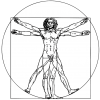During 2007 or 2008 I read that there was software that could process MRIs to know which part of a persons body
it was looking at. I suggest that technique treated as a database creates the opportunity to compare say the size
of the livers of 10,000 people from existing datafiles, then see if liver size correlates with reduced susceptibility to
cancer. a plausible hypothesis as the liver makes P450 enzymes that process xenobiotics, some of which are regulated as
carcinogens.
As such this big database is a place to find genetic immunity or resistivity to diseases. It is possible that people with big pancreases are less likely to be functionally diabetic as they might make more enzymes. Thus people with a family history of diabetes could IVF or other technique to choose an embryo likely to be immune to any genetic susceptibilities to disease.
so really its just a database applied to this MRI system finder technology I read about. Although as a database
it could also be explored to find numerically suggestive data to create valid hypothesis. like big liver goes with less cancer is kind of obvious, The database might find things like lung branching fractal number suggests immunity to
asthma or something where the numbers lead part of the research. Or possibly complete length of arteries (divided with) heart
size predicts cardiovascular well being, yet can be linked to a genetics of arterial length. Thus finding the genetics of being mostly immune to cardiovascular disease.
<funny> its mass throughput non brain phrenology at
p<.001! </funny> It could also work. It also makes genetic medicine more attractive. as people could physically reduce cancer, heart disease, diabetes all with one database. also this voluntary medical technology benefits more than just one treated person, it benefit all
their descendants.
Edited by treonsverdery, 20 March 2012 - 02:05 AM.















































